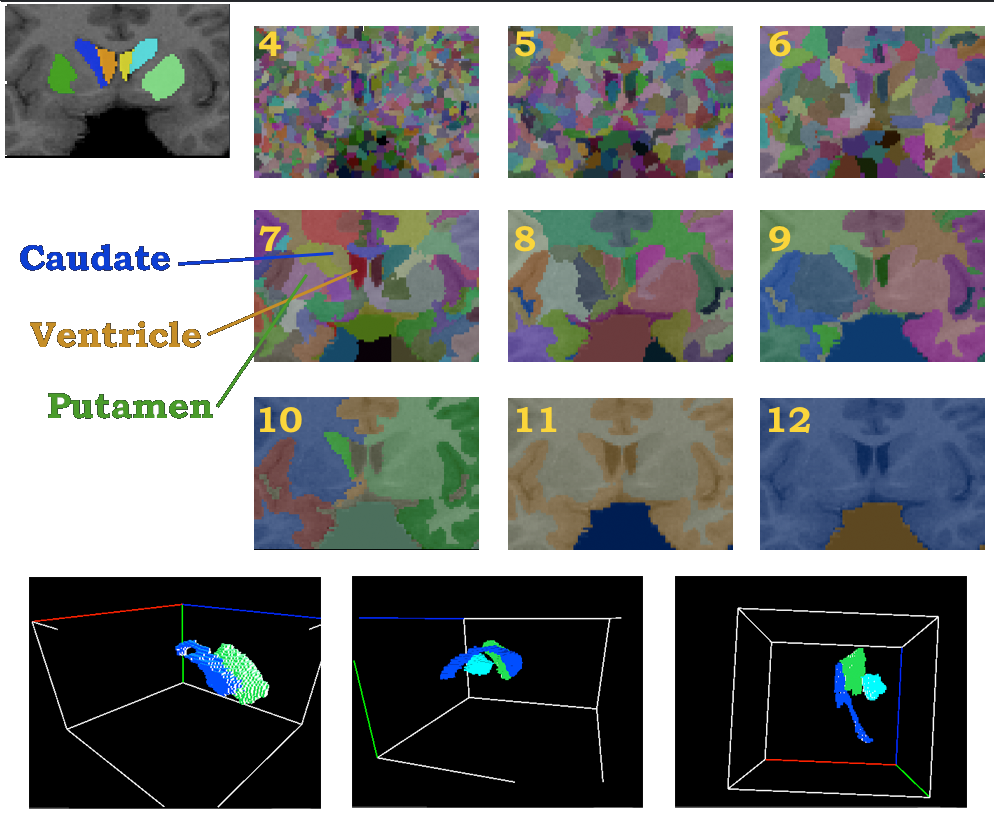
Jason J. Corso
| Snippets by Topic | |
| * | Active Clustering |
| * | Activity Recognition |
| * | Medical Imaging |
| * | Metric Learning |
| * | Semantic Segmentation |
| * | Video Segmentation |
| * | Video Understanding |
| Selected Project Pages | |
| * | Action Bank |
| * | LIBSVX: Supervoxel Library and Evaluation |
| * | Brain Tumor Segmentation |
| * | CAREER: Generalized Image Understanding |
| * | Summer of Code 2010: The Visual Noun |
| * | ACE: Active Clustering |
| * | ISTARE: Intelligent Spatiotemporal Activity Reasoning Engine |
| * | GBS: Guidance by Semantics |
| * | Semantic Video Summarization |
| Data Sets | |
| * | YouCook |
| * | Chen Xiph.org |
| * | UB/College Park Building Facades |
| Other Information | |
| * | Code/Data Downloads |
| * | List of Grants |
Multilevel Segmentation with Bayesian Affinities
People: Jason Corso, Eitan Sharon, Alan Yuille
Automatic segmentation is a difficult problem: it is under-constrained, precise
physical models are generally not yet known, and the data presents high
intra-class variance. In this research, we study methods for automatic
segmentation of image data that strive to leverage the efficiency of bottom-up
algorithms with the power of top-down models. The work takes one step toward
unifying two state-of-the-art image segmentation approaches: graph
affinity-based and generative model-based segmentation. Specifically, the main
contribution of the work is a mathematical formulation for incorporating soft
model assignments into the calculation of affinities, which are traditionally
model free. This Bayesian model-aware affinity measurement has been integrated
into the multilevel Segmentation by Weighted Aggregation algorithm. As a
byproduct of the integrated Bayesian model classification, each node in the
graph hierarchy is assigned a most likely model class according to a set of
learned model classes. The technique has been applied to the task of detecting
and segmenting brain tumor and edema, subcortical brain structures and multiple
sclerosis lesions in multichannel magnetic resonance image volumes (see the application page for more details on the use
of the ideas).
This is an example result on a synthetic image.
 This is an example result on 3D structural MRI for brain subcortical structure segmentation.
This is an example result on 3D structural MRI for brain subcortical structure segmentation.
 Code: is available. Please email me.
Code: is available. Please email me.


Publications:
-
J. J. Corso, E. Sharon, S. Dube, S. El-Saden, U. Sinha, and A. Yuille.
Efficient Multilevel Segmentation with Integrated Bayesian Model
Classification.
IEEE Transactions on Medical Imaging, 27(5):629-640, 2008.
- Jason J. Corso, E. Sharon, and Alan L. Yuille. Multilevel Segmentation and Integrated Bayesian Model Classification with an Application to Brain Tumor Segmentation. In Proceedings of Medical Image Computing and Computer Aided Intervention (MICCAI), 2006. [pdf] | [poster]